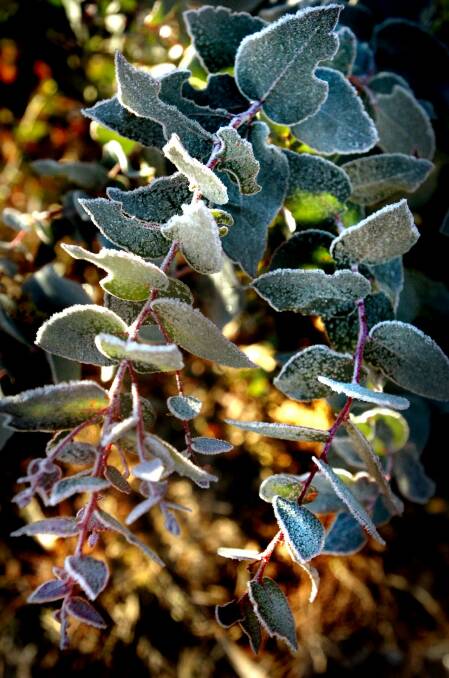You need to be sneaky if you live in a climate with cold winters, but still fancy a lemon tree, winter tomatoes, or 100 chokos. (Chokes either come as 'none' or 'lots'.)
Subscribe now for unlimited access.
$0/
(min cost $0)
or signup to continue reading
Our place is cold. Every winter morning the wombat droppings have white frost whiskers. By now the agapanthus by the bedroom have slimy tops, the basil bushes have shrunk to brown and the tomato vines in the vegetable gardens are withered memories. But next to our front door the self-sown tomato has spread two metres wide and over a metre high and is blooming and even setting fruit.

It's in the perfect spot. The stone wall behind it retains heat and reflects it too, as does the paving beneath it. I suspect that even when our garden goes down to -9 ºC (it's only been -1ºC so far) that tomato bush will survive. It may even just possibly bear ripe fruit, though only if it's the offspring of a cherry tomato variety or a Siberian one.
Which, quite possibly, it is – the birds love the cherry tomatoes, as they can carry them off to eat comfortably on the window-sill, just above where this seedling has popped up.
The agapanthus behind the bathroom aren't frost bitten, even though they are the same variety as the sad ones by the bedroom. The spot behind the bathroom is a perfect one, too – not particularly sunny, but on a slope and as the cold from frost 'flows' downhill, so 'the middle of a slope' is an excellent spot for winter gardens. The bathroom aggies are also protected by a layer of taller trees on the slope above them that help trap warmth too. They also have the small stone walls that terrace the hill behind them.
If you want to grow frost sensitive plants when the weather goes down to -9 ºC, you need to find the perfect spot. It won't necessarily be sunny – our shade-loving tamarillos do quite nicely under the avocado trees and bottle brushes. The choko vine loves sun, but it has dutifully climbed up and over the lemon tree to get it, lots and lots of sun, out of reach of the first few degrees of frost.
But sun-lovers like pineapple and fruit salad sages, with their bright red and flagrant pink flowers respectively, and appropriately scented leaves, do need sun. We've planted them where hardy trees act as wind breaks, and the sunny slope behind gives them more heat. That is also how we can grow avocados – as well as keeping them protected for about their first seven years till they have acclimatised and grown large rooted enough to be hardy – and oranges, lemons and limes.
Learn to judge the frost potential of your garden. Even in a small area frost damage can vary enormously. Imagine frost as a body of cold air flowing like water. It will settle in hollows, flow down drains and along air channels, be easily blocked by fences, hedges and other plants so that it pools and causes increased damage. If frost can drain away it may leave the higher spots in your garden clear – especially if they are north facing and thus warmer. Frost also settles on mulch and bare soil. Mulch may stop plant roots from freezing – but it will increase the frost damage to leaves.
Luckily our garden is rich in slopes – living on the side of the mountain our garden is nothing but slopes – as well as being littered with large rocks and scree slopes that we can turn into stone walls or paving to erect and retain heat.
Think of sunny spots next to garage walls or build stone or masonry walls to create a sheltered warm courtyard. A paved courtyard is even better, all that heat warming the plants on cold nights and giving them a boost during the day. Concrete paths are also excellent, if a bit boring.
Basically, you can grow anything, anywhere - if you are prepared to put enough effort of money into it. I could grow pepper and vanilla if I had a lovely glass and wrought iron, 20 metre high greenhouse, preferably with a heated pool and attached to the living room.
I think I will make do with winter lemons. And avocados.
And a sloping garden and some sneakery.
This week I am:
- giggling at the lyrebirds screeching at their own reflections in the living room windows;
- counting the shaggy mauve tree dahlia flowers – the frosts will burn them soon, but they bloom so high up they'll survive a few medium frosts – the perfect spot – until it goes down to about minus five at ground level;
- watching the yellow blooms of the pineapple marigold bush begin too open;
- hunting for tomato chutney and green tomato pickle and tomato relish at farmer's markets – I didn't get around to making any for ourselves and a splosh of any of them brightens an omelette wonderfully;
- giving the hens more corn and carbohydrates so we keep getting enough eggs for omelettes (see above); and
- dreaming of spring when green spears appear among the brown asparagus clumps.
f. @jackiefrenchauthor
t. @jackie_french_
i. @jackie_french_

